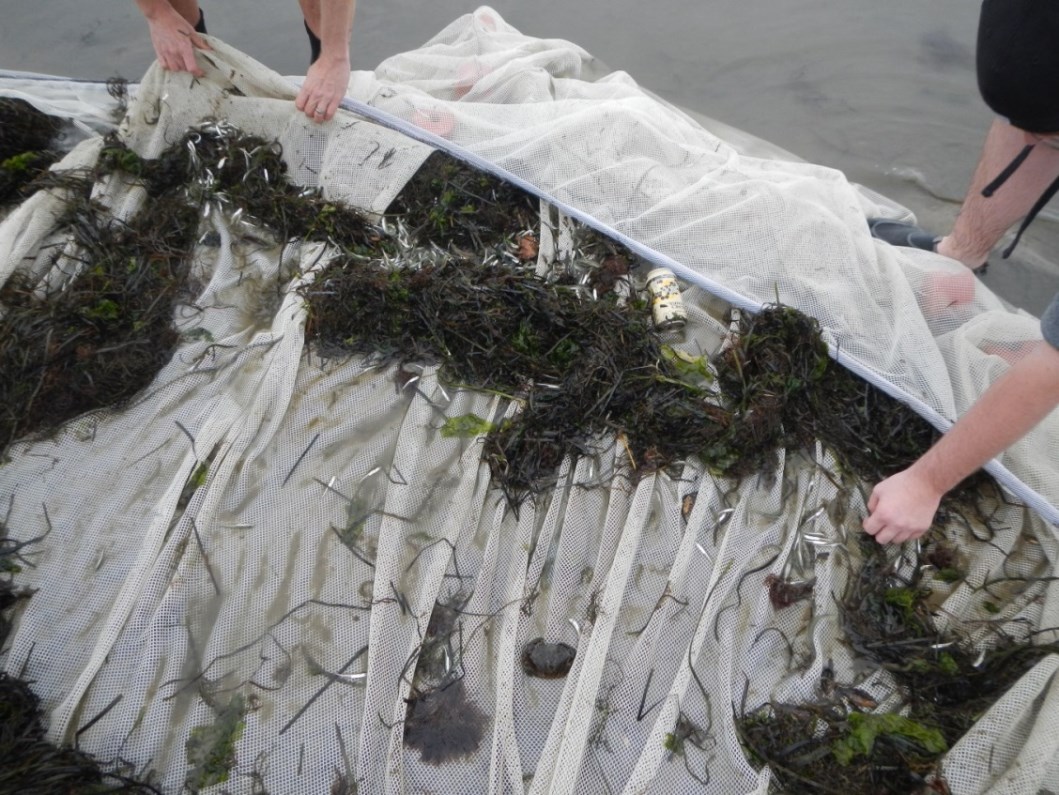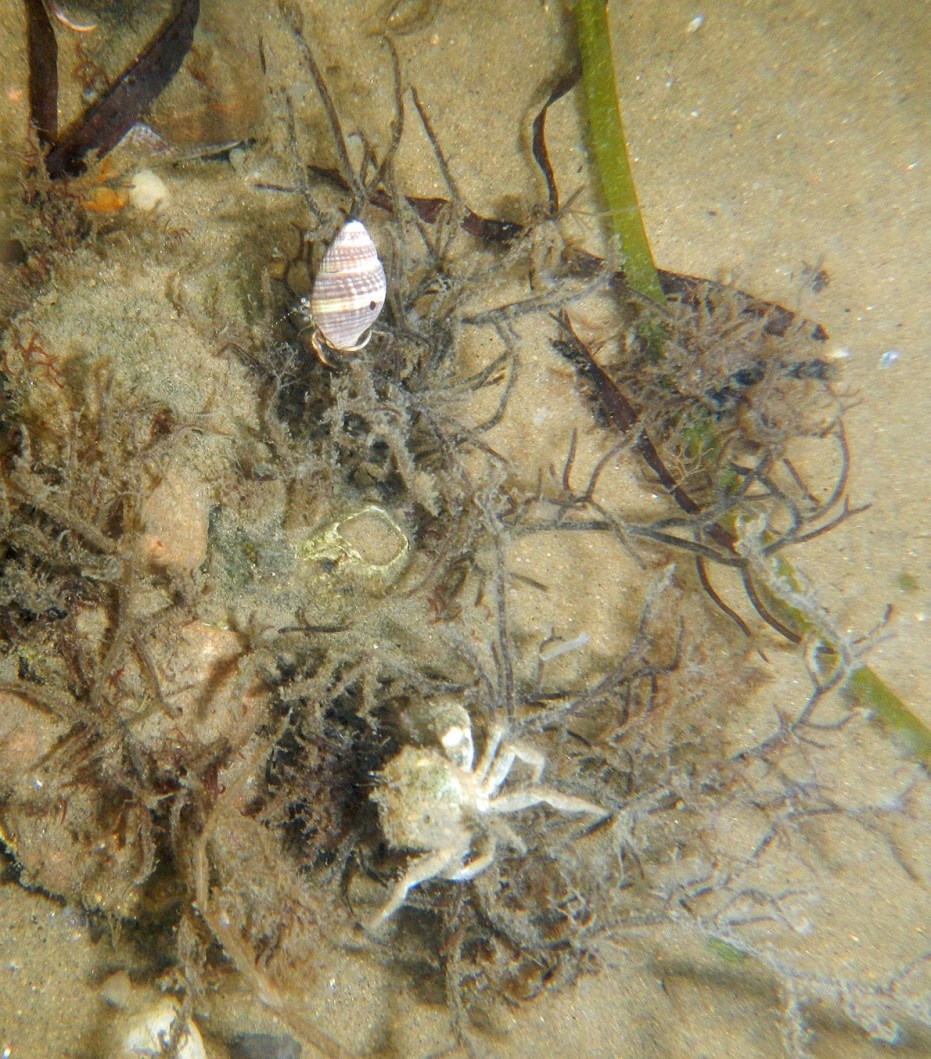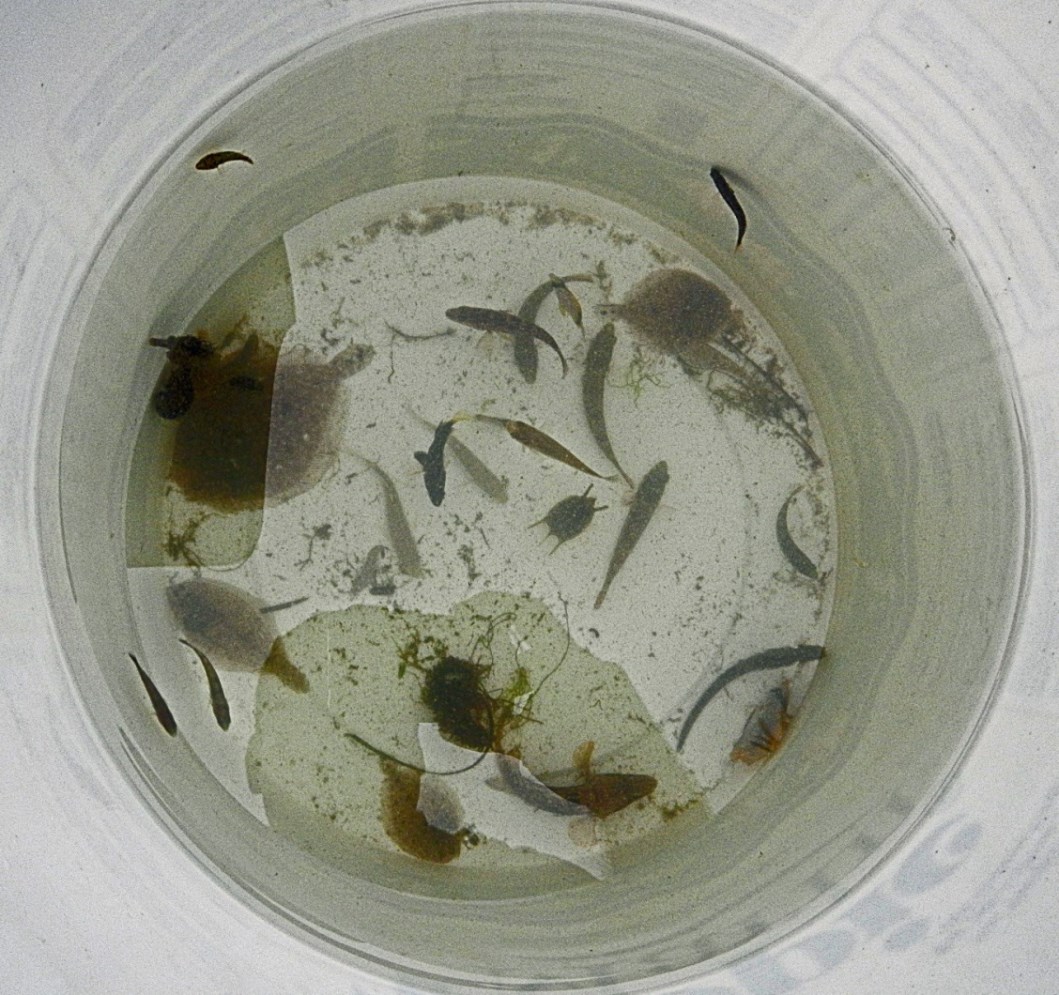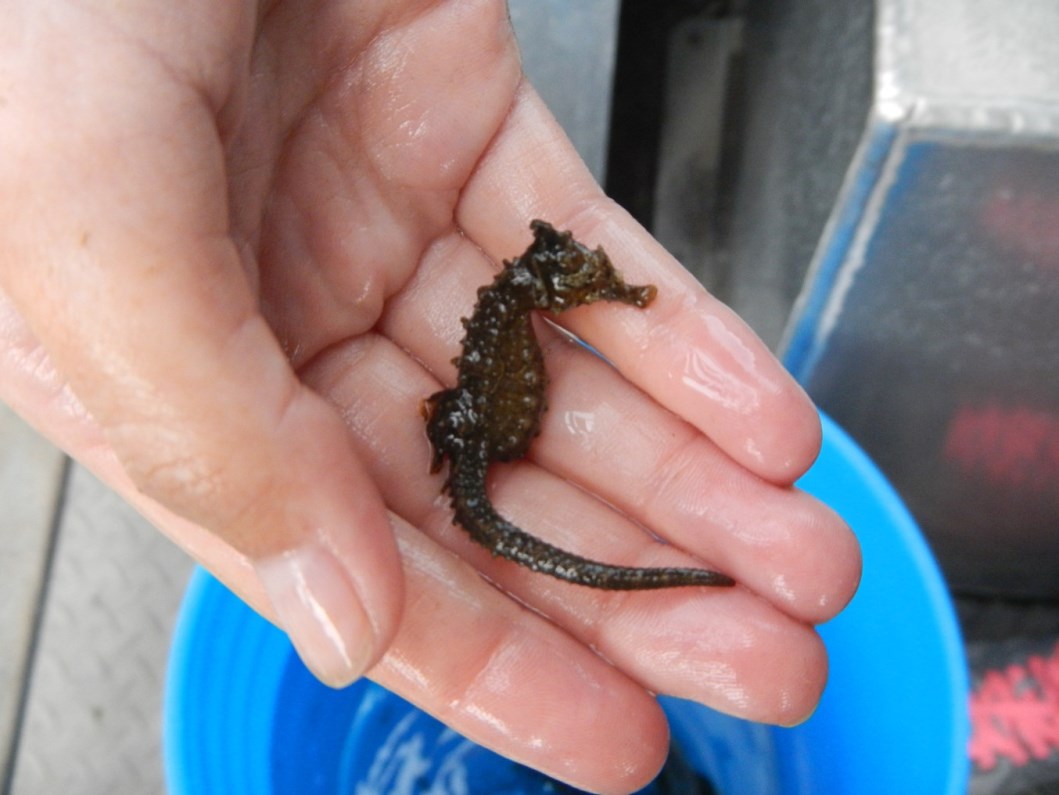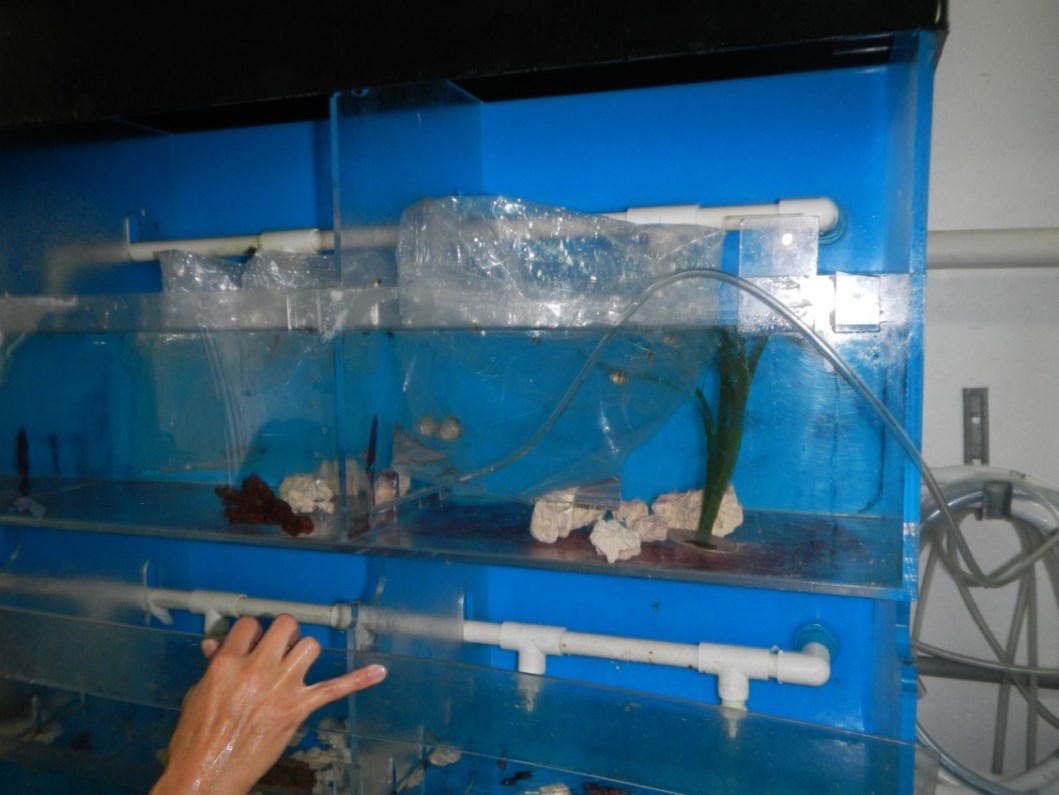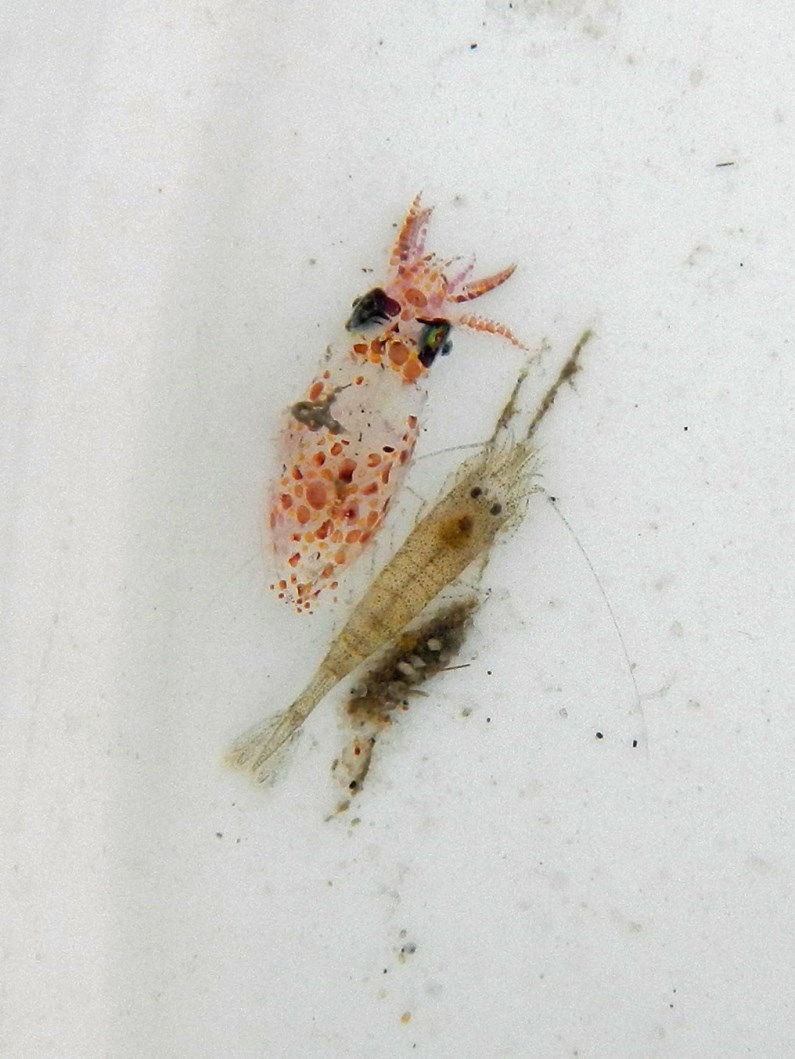
Students and Toledo Zoo staff retrieving a seine in the sea grass flats of Shinnecock Bay, Long Island.
It has been known for many years that larval tropical fish are transported northward along the Atlantic coast of North America by the Gulf Stream current. Towards the end of the summer, some of these larvae have settled out in the shallows around Long Island. Species recorded from this region include short bigeyes, butterflyfish, wrasses and sometimes even angelfish. These juvenile fish are destined to perish when the water temperature begins to drop in late October. Aquarists, knowing this, have harvested these fish for aquarium exhibits as a more sustainable means of acquiring specimens than taking animals directly from reefs. As the Toledo Zoo was in the midst of stocking its new aquarium, undertaking such a collecting trip would help that process.
A prospectus was sent out to the Bowling Green State University marine lab. Of the twenty students who applied, six were selected to participate in the collecting trip. Most of these students opted to also receive credit from BGSU which considered the trip to be a one credit field course.
The student program began with lectures about collection planning and animal ethics, as well as tours of the Toledo Zoo’s aquarium holding facility and the new aquarium that was under construction at the time. The subsequent six day collecting trip was led by the aquarium curator, an aquarist and a Toledo Zoo biologist. The participants drove in a van to Long Island, and along the way stopped to tour the Pittsburgh Zoo, a tropical fish wholesale firm and then the Long Island Aquarium. Once on site, we met up with a local naturalist who held a collecting permit, and knew all the best sites for collecting the tropical waif specimens. We spent the next four days collecting, visiting the marine labs of two local colleges, as well as a nature center.
The most productive collecting was done by seine, in shallow sea grass flats. There was also did some limited diving and snorkeling, as well as night-lighting while wading. The students learned how to properly handle the fish, and to identify common species. The curator selected specimens that fit the institutional collection plan, and those were retained while all of the other animals were safely released.
We ended up collecting and bringing back 53 fish and 20 invertebrates comprising 20 different species. Only one small goby was lost during transport and acclimation back to the Toledo Zoo. The animals all adapted well, although they did develop a Cryptocaryon infection, probably due to their having been living in a marginal habitat prior to collection and then temperature changes they underwent (they were swimming in 65 degree water in the ocean, but they were then held at 75 degrees prior to transport):
3 Trunk fish, Rhinesomus (Lactophrys) triqueter
4 Sea robins, Prionotus sp.
5 Four eyed butterfly fish, Chaetodon capistratus
5 Puffer, Sphoeroides sp.
1 Lizard fish, Synodus sp.
3 Spot fin butterfly, Chaetodon ocellatus
1 Grey Snapper, Lutjanus griseus
4 Short Bigeyes, Pristigenys alta
6 Cowfish, Acanthostracion (Lactoria) quadricornis
3 Goby, Ctenogobius sp.
1 Scamp, Mycteroperca phenax
3 Twospot flounder, Bothus robinsi
1 Scorpion fish, Scorpaena sp.
4 Snowy Grouper, Epinephelus niveatus
1 Flying gurnard, Dactylopterus volitans
1 Reef butterfly, Chaetodon sedentarius
2 Rock hind grouper, Epinephelus adscensionis
4 Parrotfish, Cryptotomus roseus
13 Hermit crabs, Pagurus pollicaris
7 Spider crabs, Libinia emarginata
All in all, this was a very successful trip for the Zoo and students alike. We intend to expand our offerings for experiential learning to include adult education trips, as well as collecting trips to other locales.
